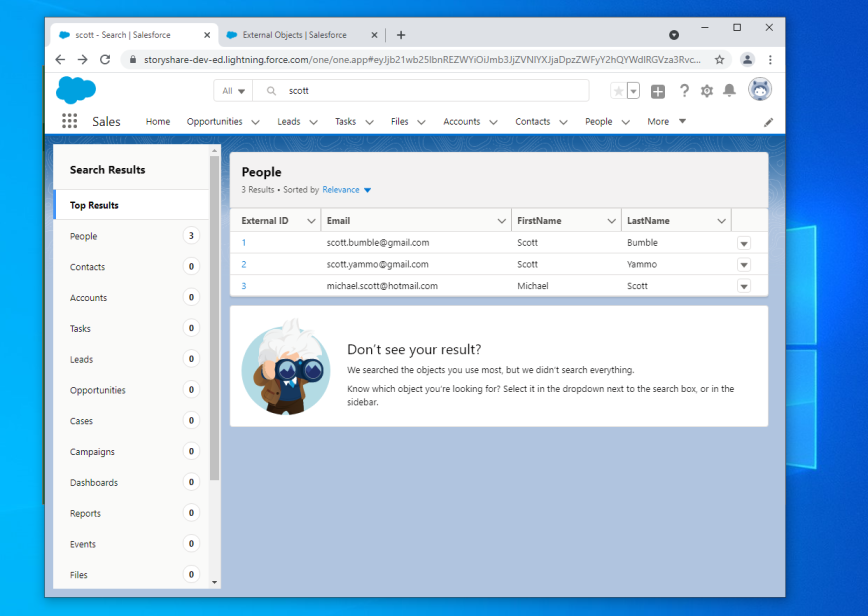# Salesforce Connect
Salesforce Connect (opens new window) provides seamless integration of data across system boundaries by letting your users view, search, and modify data that’s stored outside their Salesforce org.
Salesforce can interact with a Lodata service in real time, supporting data reads by searching and filtering, and allowing the creation, updating and deletion of OData objects through the Lightning experience.
# External Data Source
# Step 1 - Setup
In Salesforce setup, navigate to Integrations -> External Data Sources and choose "New External Data Source".
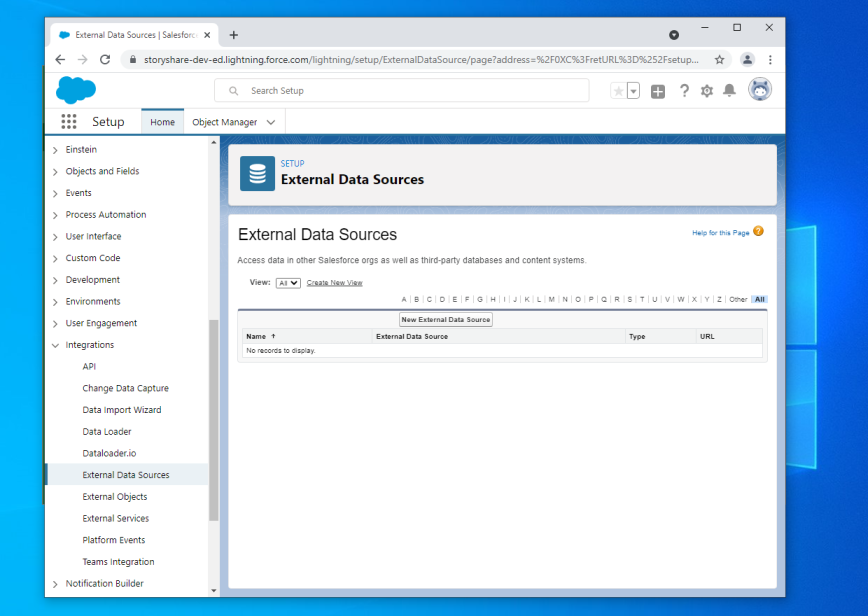
# Step 2 - Configure data source
Configure the data source with an appropriate name, and type "Salesforce Connect OData 4.0". The URL is the normal endpoint that can be programmatically generated and presented by your app using:
\Lodata::getEndpoint()
This example has all Lodata-supported features enabled, including "Writable External Objects", "Server Driven Pagination" and "Use Free-Text Search Expressions". Choose "Save" to complete the configuration.

# Step 3 - Validate and Sync
Click the "Validate and Sync" button to get a list of available entity sets.
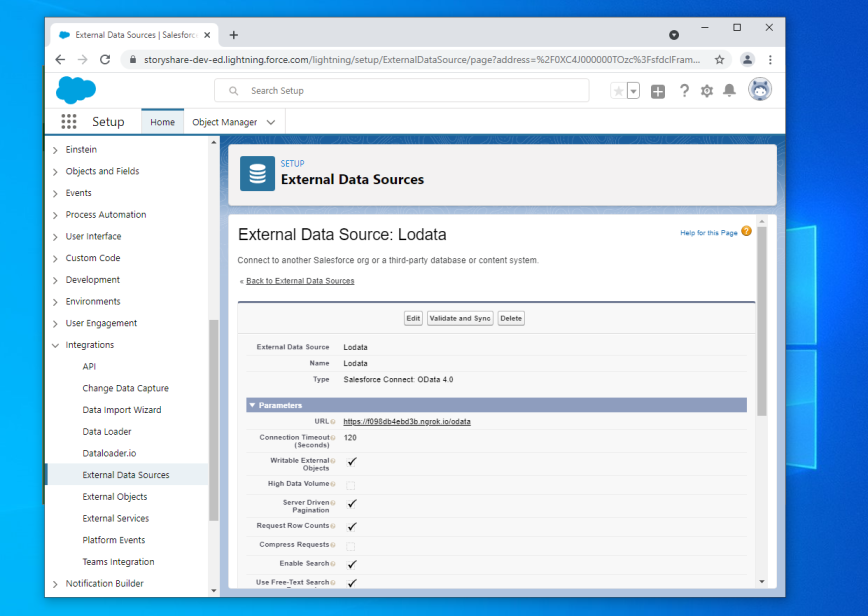
# Step 4 - Sync entity sets
Select the entity sets to make available as external data objects, and click "Sync".
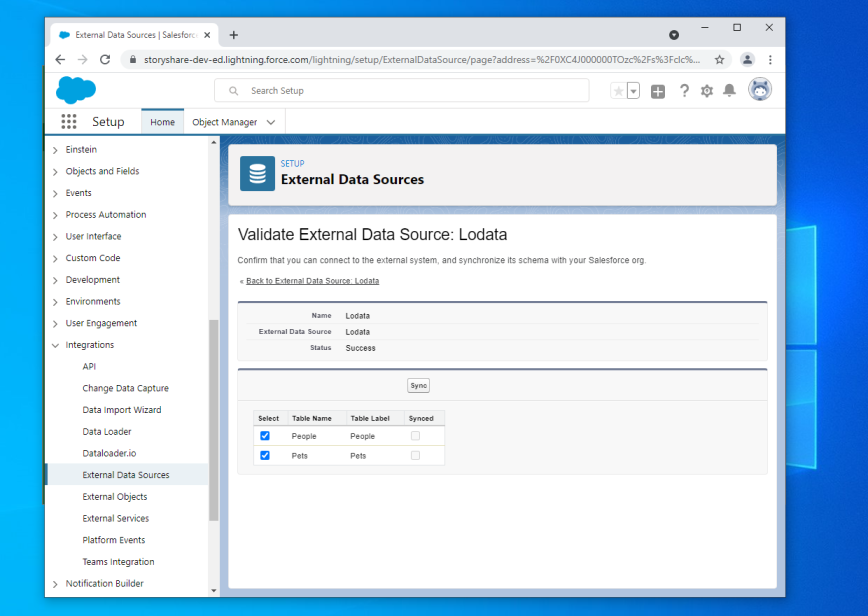
# Step 5 - Edit the objects
At this stage we can edit the object definition to tidy it up. Click the name of the external object to see its settings.

# Step 6 - Edit page layout
Salesforce has imported the complete list of properties on the object, which for some entity set types includes the "ID" as a property. This should be removed for SQL-style sets that have a computed ID. Click the "Edit" action under "Page Layouts".
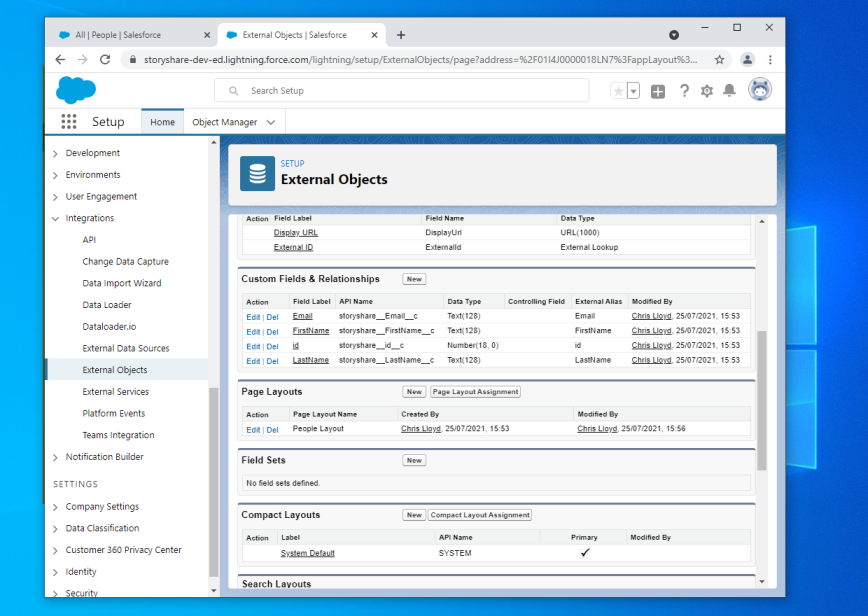
# Step 7 - Remove ID field
Scroll down to the "Detail" section for the set, and remove the "id" field. Save the page layout.

# Step 8 - Create a tab
The easiest way to display your data in the Lightning experience is to create a tab. Navigate to User Interface -> Tabs, and create a new Custom Object Tab.
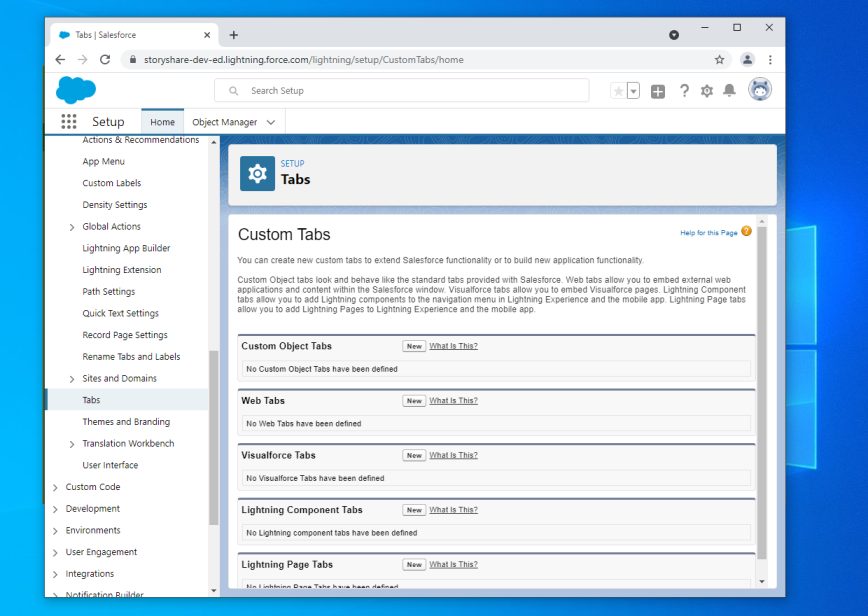
# Step 9 - Configure the tab
Choose your custom object from the list and choose a tab style. Click "Next" through the rest of the wizard to use the defaults.
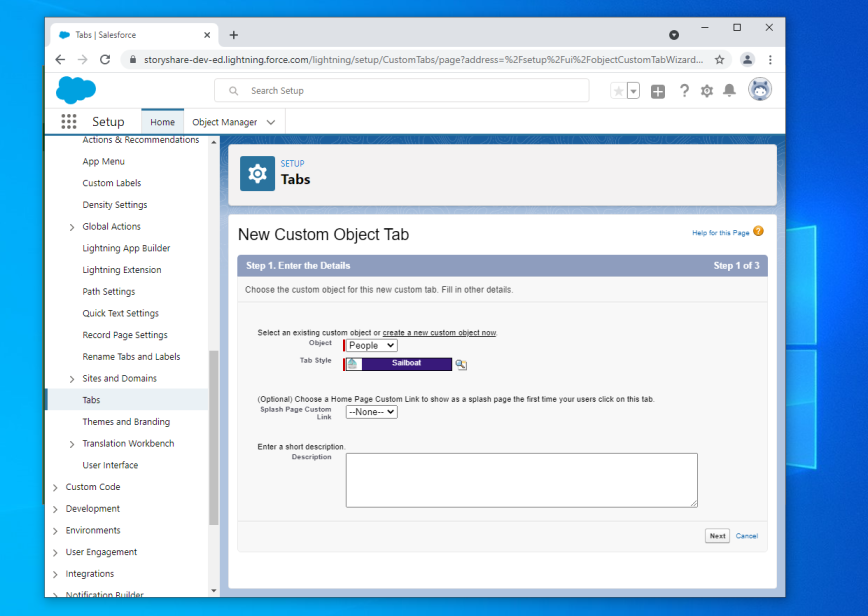
# View in Lightning
Now that the tab has been created in the Setup application, it can be viewed in the Lightning experience.
# Step 1 - Open the tab
Your new tab will be available under the More menu.
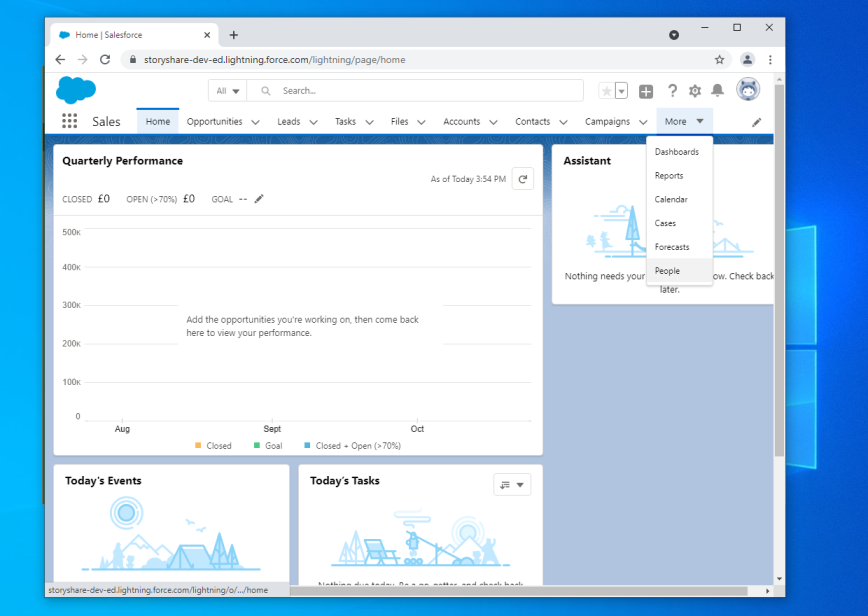
# Step 2 - Basic data view
Change "Recently Viewed" to "All" to show your data. By default, Salesforce is showing the "External ID", which is the Entity ID, and the "Display URL" which is not relevant to our data. This can be easily changed.
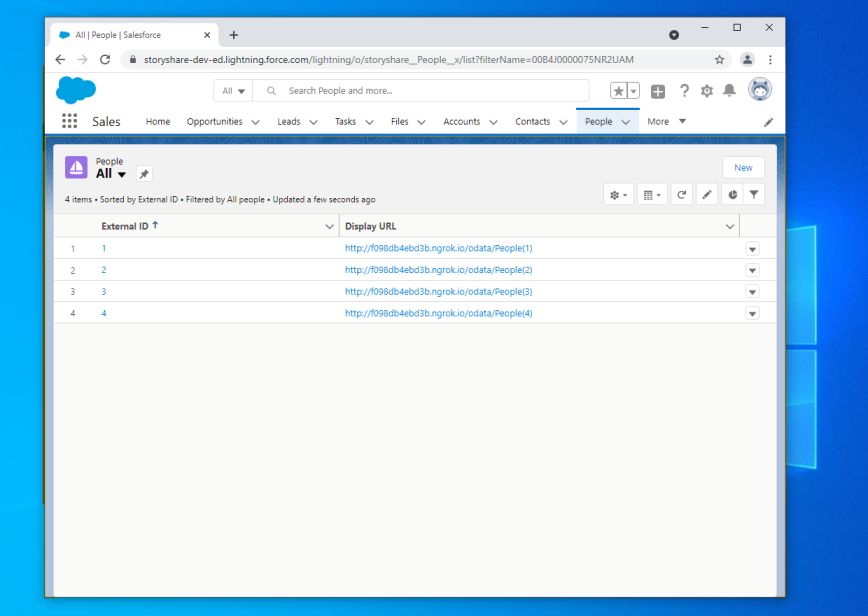
# Step 3 - Change list view
Select "Select Fields to Display" from the List View Controls.
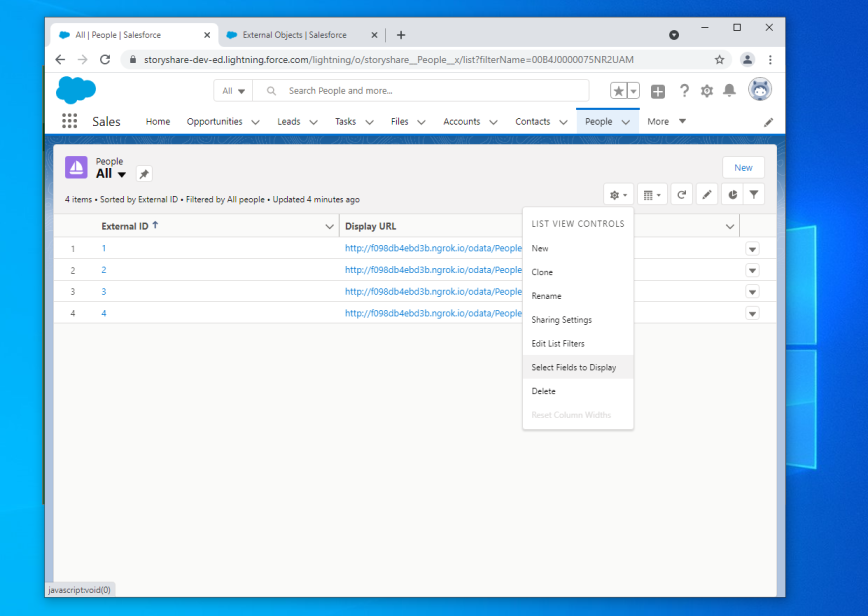
# Step 4 - Choose fields
Choose the fields you want to display in the list view, and remove the Display URL.
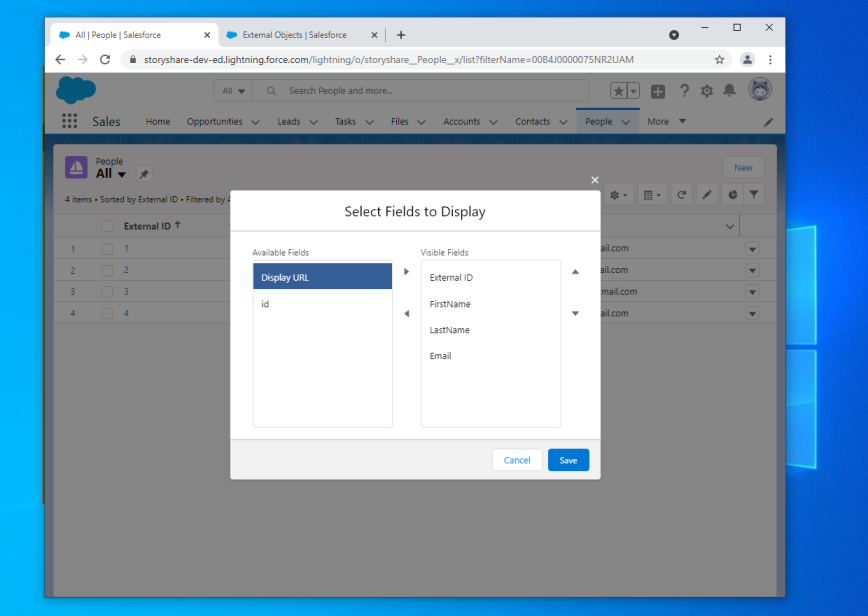
# Step 5 - Updated list view
Observe that the list view now looks much more presentable.
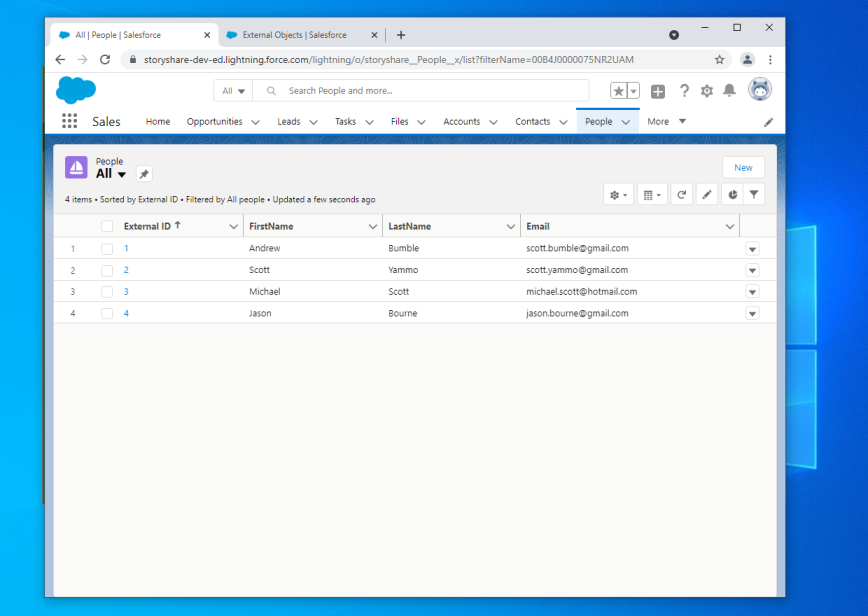
# Step 6 - Sorting
By clicking the field headings you can sort the columns. This is performing server-side sorting in real time.

# Step 7 - Editing
If you configured your Lodata connection to use "Writable External Objects", then you can edit your data through this interface. Choose a field to edit, and change its value.
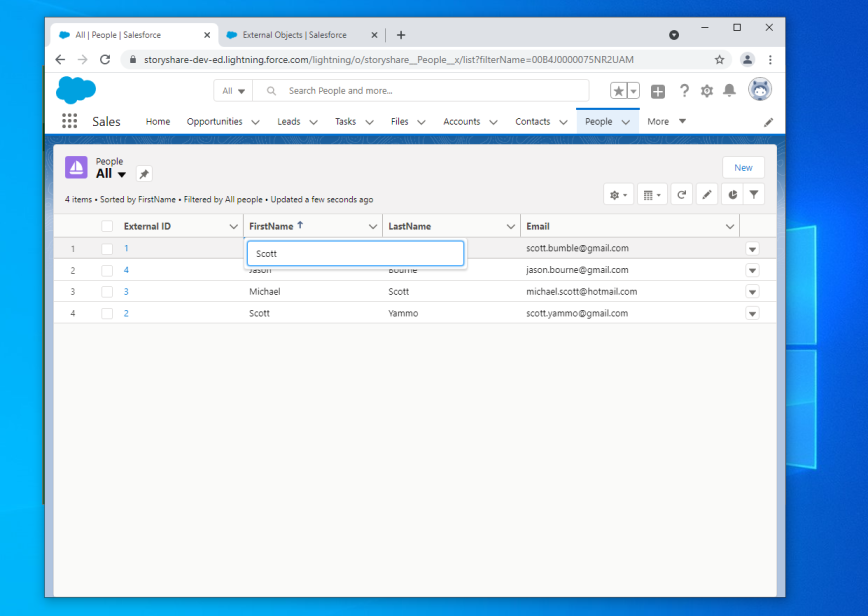
# Step 8 - Saving
When you click Save, your edits will be applied immediately to the service.

# Step 9 - Searching
If you have configured properties of your Entity Type to support searching, then you can search your Lodata models
from the main Salesforce search bar. Performing a search will use the $search system query option, returning
your data alongside the standard Salesforce search results.
